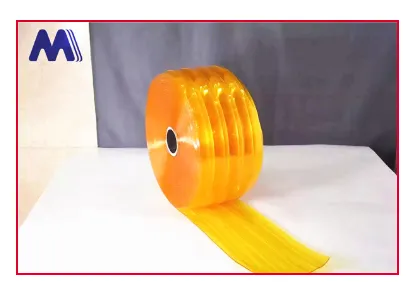- Afrikaans
- Albanian
- Amharic
- Arabic
- Armenian
- Azerbaijani
- Basque
- Belarusian
- Bengali
- Bosnian
- Bulgarian
- Catalan
- Cebuano
- Corsican
- Croatian
- Czech
- Danish
- Dutch
- English
- Esperanto
- Estonian
- Finnish
- French
- Frisian
- Galician
- Georgian
- German
- Greek
- Gujarati
- Haitian Creole
- hausa
- hawaiian
- Hebrew
- Hindi
- Miao
- Hungarian
- Icelandic
- igbo
- Indonesian
- irish
- Italian
- Japanese
- Javanese
- Kannada
- kazakh
- Khmer
- Rwandese
- Korean
- Kurdish
- Kyrgyz
- Lao
- Latin
- Latvian
- Lithuanian
- Luxembourgish
- Macedonian
- Malgashi
- Malay
- Malayalam
- Maltese
- Maori
- Marathi
- Mongolian
- Myanmar
- Nepali
- Norwegian
- Norwegian
- Occitan
- Pashto
- Persian
- Polish
- Portuguese
- Punjabi
- Romanian
- Russian
- Samoan
- Scottish Gaelic
- Serbian
- Sesotho
- Shona
- Sindhi
- Sinhala
- Slovak
- Slovenian
- Somali
- Spanish
- Sundanese
- Swahili
- Swedish
- Tagalog
- Tajik
- Tamil
- Tatar
- Telugu
- Thai
- Turkish
- Turkmen
- Ukrainian
- Urdu
- Uighur
- Uzbek
- Vietnamese
- Welsh
- Bantu
- Yiddish
- Yoruba
- Zulu
Feb . 05, 2025 01:07
Back to list
transparent pvc welding curtain
Transparent PVC welding curtains are invaluable tools in industrial environments where safety, efficiency, and visibility must coexist. These curtains not only shield workers from harmful welding arcs but also facilitate a safe and organized workspace that adheres to occupational safety standards. This article delves into the exceptional advantages of transparent PVC welding curtains, highlighting their pivotal role in modern manufacturing settings and presenting a compelling case for their integration in industrial workspaces.
In addition to their practical benefits, transparent PVC welding curtains contribute to the aesthetic organization of a workspace. They help create a professional and orderly environment by minimizing clutter, thus promoting a more efficient workflow. Furthermore, their adaptability in various settings, from small workshops to large manufacturing plants, underscores their versatility as a safety solution. The expertise behind manufacturing these curtains relates back to comprehensive research and development, focusing on workplace safety innovations. Industry experts continuously work on improving the transparency, strength, and flame-retardant properties of the materials used. As a result, the industry has witnessed the creation of welding curtains that not only meet but exceed existing safety standards, offering peace of mind to employers and employees alike. Trustworthiness is central to the adoption of transparent PVC welding curtains. Companies prioritizing employee safety often conduct rigorous evaluations of protective equipment before deployment. Independent testing and certifications from relevant safety bodies further bolster trust in these products, assuring companies that they are choosing a reliable protective measure for their workforce. With the integration of transparent PVC welding curtains, workplaces can effectively enhance safety and efficiency without compromising on visibility and monitoring capabilities. These curtains are not just safety barriers; they are essential components of a comprehensive safety strategy that supports both productivity and well-being in industrial environments. As the nature of manufacturing evolves, these innovations will remain at the forefront, aiding companies in keeping pace with safety requirements and operational demands.


In addition to their practical benefits, transparent PVC welding curtains contribute to the aesthetic organization of a workspace. They help create a professional and orderly environment by minimizing clutter, thus promoting a more efficient workflow. Furthermore, their adaptability in various settings, from small workshops to large manufacturing plants, underscores their versatility as a safety solution. The expertise behind manufacturing these curtains relates back to comprehensive research and development, focusing on workplace safety innovations. Industry experts continuously work on improving the transparency, strength, and flame-retardant properties of the materials used. As a result, the industry has witnessed the creation of welding curtains that not only meet but exceed existing safety standards, offering peace of mind to employers and employees alike. Trustworthiness is central to the adoption of transparent PVC welding curtains. Companies prioritizing employee safety often conduct rigorous evaluations of protective equipment before deployment. Independent testing and certifications from relevant safety bodies further bolster trust in these products, assuring companies that they are choosing a reliable protective measure for their workforce. With the integration of transparent PVC welding curtains, workplaces can effectively enhance safety and efficiency without compromising on visibility and monitoring capabilities. These curtains are not just safety barriers; they are essential components of a comprehensive safety strategy that supports both productivity and well-being in industrial environments. As the nature of manufacturing evolves, these innovations will remain at the forefront, aiding companies in keeping pace with safety requirements and operational demands.
Prev:
Next:
Latest news
-
Industrial Strip Curtains - Durable PVC & Plastic Solutions for Industrial DoorsNewsJun.24,2025
-
PVC Curtain Strip – Durable Standard PVC Strips for DoorsNewsJun.10,2025
-
PVC Strip Curtain – Durable & Transparent Plastic Strips for Industrial Use Affordable PricesNewsJun.10,2025
-
Clear Plastic Door Curtains Durable & Insulating VisibilityNewsJun.09,2025
-
Commercial Strip Curtains Energy Savings & Durability for Industrial UseNewsJun.09,2025
-
Anti-Cold PVC Strip Curtains Thermal Insulation & Energy Saving SolutionsNewsJun.09,2025



